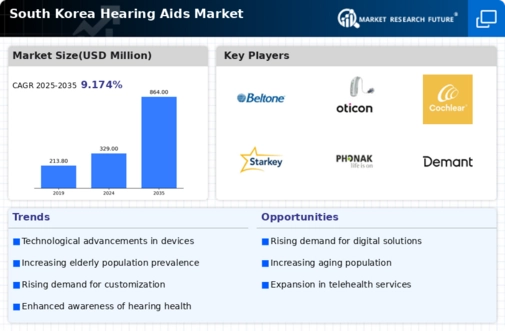The South Korea Hearing Aids Market is characterized by intense competition and rapid advancements in technology, driving continuous improvements in product offerings and services tailored to the needs of consumers. Factors such as an aging population, increased awareness of hearing health, and advancements in digital technologies have contributed to the growth of this market. Companies operating in this sector are focusing on enhancing their product ranges, which include innovations in wireless connectivity, noise reduction, and user-friendly designs to cater to diverse customer preferences.
Competitive strategies involve not only product development but also effective marketing approaches, distribution networks, and strategic partnerships, all aimed at gaining market share in a dynamic environment.In South Korea, Sonova Holding AG has established a significant presence in the hearing aids sector, capitalizing on its advanced technology and innovation in sound processing. The company's strengths lie in its commitment to research and development, allowing it to consistently deliver high-quality products that address the complexities of hearing impairment. Sonova's strong brand reputation is bolstered by its proactive approach to understanding consumer preferences and integrating feedback into product enhancements.
This agile responsiveness to market demand has enabled Sonova to cultivate a loyal customer base, securing its position as a key player in the South Korean hearing aids landscape. Furthermore, the company’s commitment to improving the accessibility of hearing aids further supports its competitive advantage in this region.Beltone, another prominent entity in the South Korean Hearing Aids Market, is renowned for its cutting-edge hearing solutions that combine advanced technology with user-centric designs. The company focuses on a portfolio that includes both traditional hearing aids and sophisticated digital models equipped with features such as Bluetooth connectivity and smartphone integration.
Beltone’s strengths include a robust distribution network and strategic partnerships that facilitate product availability across various channels, ensuring consumers have easy access to its offerings. The brand is recognized for its comprehensive customer service, which includes fitting and aftercare, enhancing the overall consumer experience. In terms of market strategy, Beltone has successfully engaged in targeted marketing campaigns and community outreach efforts to educate consumers about hearing health, which has further solidified its reputation and market presence in South Korea.


















Leave a Comment